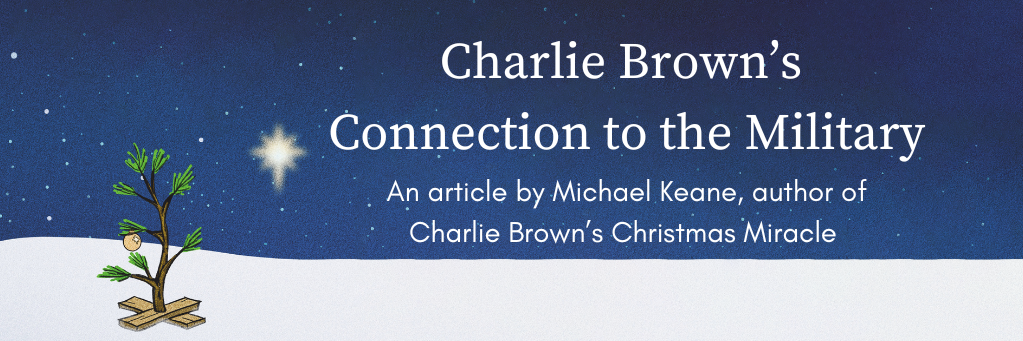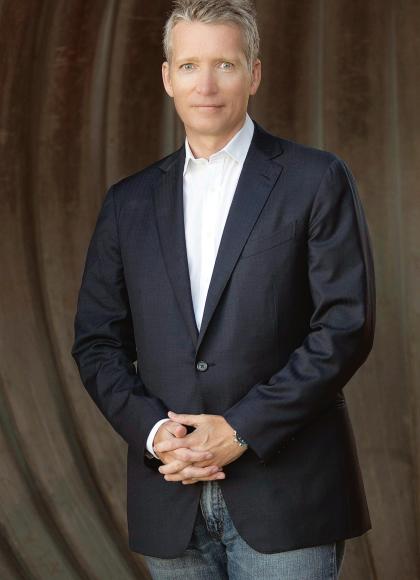Charlie Brown’s Connection to the Military

Charlie Brown and the Military?
A Charlie Brown Christmas has been a classic holiday movie since it first debuted in 1965. Every year, families around the globe enjoy watching the television special together. In his new book, Charlie Brown’s Christmas Miracle, professor and cultural historian Michael Keane reveals the challenges and struggles that made the debut of this classic nothing short of a miracle. And along the way, you’ll find nostalgia-inducing research, interviews, and insights that will make you love Charlie Brown even more… including the surprising connections this holiday classic has to the US military. Here are four largely unknown connections between A Charlie Brown Christmas and our armed forces.
The creators behind A Charlie Brown Christmas were all veterans of the US military. Charles Schulz, the creator of Charlie Brown and the writer of the script for the Christmas special was a US Army combat veteran of World War II. The show’s producer, Lee Mendelson, served in the United States Air Force. Vince Guaraldi, who composed the music for the special, was a US Army veteran as was the program’s director and animator, Bill Melendez.
Charles Schulz was incredibly proud of his military service during World War II. When an interviewer asked Charles Schulz what his proudest accomplishment was, the cartoonist didn’t mention the creation of Charlie Brown, Snoopy or the Peanuts comic strip or its many television specials. Schulz instead pointed to a framed military award he kept on his studio wall—his Combat Infantryman’s Badge, which is awarded to infantrymen who have fought in active ground combat. Schulz’s tombstone makes no reference to his role as the creator of the world’s most popular cartoon strip, but it does note his World War II service and his rank as “Sgt US Army.” (See pp. 243-44).
Charles Schulz’s US Army unit arrived at the Dachau concentration camp in World War II the day after its liberation. The US Army’s 45th Infantry Division liberated the Dachau concentration camp on April 29, 1945. At dawn the following day, Charles Schulz’s unit, the 20th Armored Division, arrived at the camp. His platoon was ordered to keep moving and leave the camp to be secured by infantry units. Before moving out, a few members of Schulz’s platoon ventured past the gates of the camp and were shocked by what they saw. As Schulz’s halftrack departed, emaciated survivors stumbled alongside the convoy, stopping occasionally to hug the sides of the American vehicles. (See p. 94).
Charles Schulz likely suffered from PTSD. Charles Schulz suffered from depression and anxiety for seemingly his entire adult life. When his wife struggled to comprehend what was the source of her husband’s troubles, the cartoonist replied tersely, “My mother and the war.” (Schulz’s mother had died the day after he was inducted into the US Army.) As Schulz would later write, “I place the source of many of my problems on those three years in the army. The lack of any timetable or any idea as to when any of us would get out was almost unbearable…we were completely convinced that we were going to be in for the rest of our lives. The war seemed to have no end in sight.” (See “Author’s Note: On Earth Peace,” pp. 245-251).
Discover the inspiring, unknown, against-all-odds story of how the classic animated holiday special A Charlie Brown Christmas almost never made it on to television.
Professor and cultural historian Michael Keane reveals much in this nostalgia-inducing book packed with original research and interviews. Keane compellingly shows that the ultimate broadcast of the Christmas special—given its incredibly tight five-month production schedule and the decidedly unfavorable reception it received by the skeptical network executives who first screened it—was nothing short of a miracle. Keane explains why the show, despite its technical shortcomings, has become an uplifting and enduring triumph embraced by millions of families every Christmas season, even more than fifty years after its premiere.
This gripping and joyful behind-the-scenes story of how the creators of A Charlie Brown Christmas struggled to bring the program to life will also help readers (and loyal fans) understand how America’s favorite Christmas special changed our popular culture forever. Keane masterfully weaves the momentous events of 1965 (the turbulent year of the program’s production) into his story, providing critical context for a profound new understanding of the program’s famous climactic scene, Linus’s spot-lit soliloquy answering the question repeatedly posed by Charlie Brown—"Isn't there anyone who knows what Christmas is all about?”

